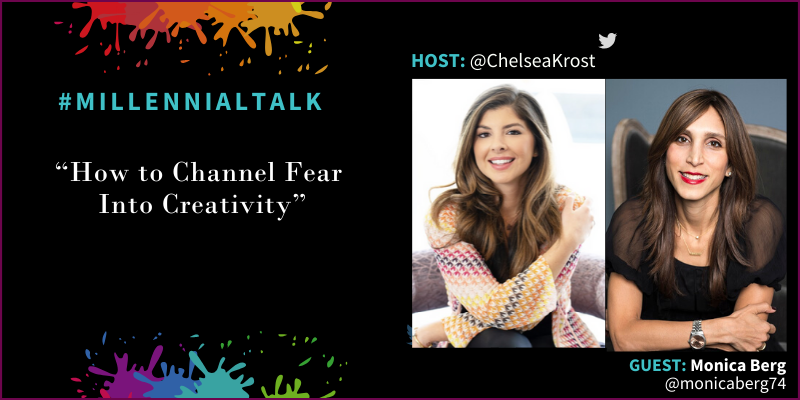
SHARE
READ & LEAVE A COMMENT

Times of stress bring out the creativity in people. Managing fear redirects energy for good effects mentally and physically — professionally and personally.
Radically changing times call for the industrial-strength skills of change junkies, among which Monica Berg claims charter membership. She shares her combination of wisdom and real-life awareness with compelling talks to a wide range of men and women at different stages in their lives.
Today’s world is uncharted territory for a host of people, including leading millennial expert and top-rated marketing and brand strategist Chelsea Krost. During her #MillennialTalk Twitter chat, she talked with Berg about channeling fear that pervades society.
During an unprecedented crisis, it wouldn’t be natural if there wasn’t a bit of fear in the background. Reacting with reasonable precautions can aid peace of mind.
“The feeling of fear is not wrong—especially right now,” Berg said. “It is high and very real. Honoring the fear that is present and understanding that it is natural is the first step.
“This type of fear is known as ‘healthy fear’ and serves a valuable purpose,” she said. “It is our internal alarm. It helps us make critical and prudent decisions about our well-being. When we take empowered action, we cut our fear in half.”
The words of American theologist Reinhold Niebuhr come to mind: “Grant me the serenity to accept the things I cannot change, the courage to change the things I can, and the wisdom to know the difference.”
Berg tapped into that sentiment.
“When we talk about eliminating fear, we’re speaking about illogical fears,” she said. “These typically come from obsessing about something out of our control. In this time, focusing on what we can control is one way to eliminate this type of unhealthy and unhelpful fear.”
Avoid needless pressure
With all seemingly happening at once, Krost said there is “no need to put unnecessary pressure on yourself. We all deserve to feel whatever feelings we have as long as they don’t get the best of us.
“In this time of uncertainty, all we can do is focus on what we can control,” she said. “What purposeful action can you take to get one step closer to the end goal? Baby steps and baby wins matter.”
The best tool to manage fear is facts. You need a healthy perspective of what confronts you so you can take the most sensible actions.
“We can shift our thinking, but this pandemic is certainly real and we all deserve to acknowledge that it is rough,” Krost said. “This too shall pass. We forget how strong and resilient we really are.”
One of the best defenses is not to accept fear as fact.
“The quickest way to transform an experience of fear is to challenge the thought behind it,” Berg said, suggesting that as a fearful thought arises, people should ask themselves three questions:
“Challenging your thoughts this way brings you back into the moment,” Berg said. “You can focus on things in your control.”
Fear can be physically and mentally unsettling.
“Our body’s physical reaction to fear is almost entirely autonomic,” Berg said. “We don’t consciously trigger it, but we can begin to familiarize ourselves with our body’s particular response.
“This comes from our amygdala: the part of our brain that releases neurotransmitters that trigger the fight-or-flight response,” she said. “It is responsible for the physical symptoms of fear and the adrenaline rush that can save our life in an emergency.”
Berg and Krost talked more here about coping skills and following a life based on generosity.
SHARE
READ & LEAVE A COMMENT